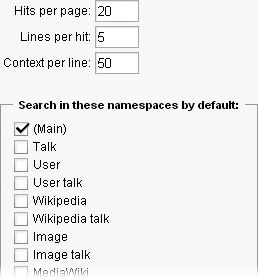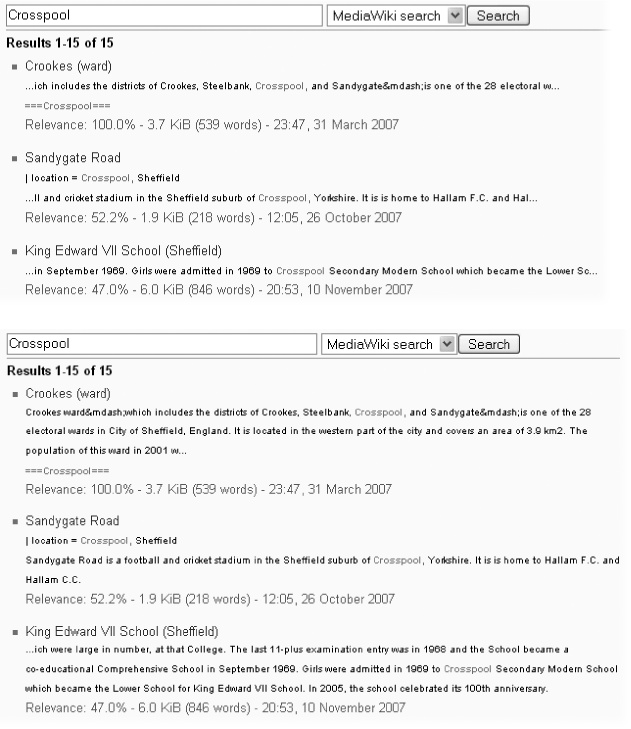Search
This tab has five settings, counting that last set of checkboxes as one setting, as seen in Figure 20-11. These settings affect what happens when you use Wikipediaâs internal search engine. (For why you may not want to use that engine for searches, see Searching Wikipedia.)

Figure 20-11. The Search tab lets you tailor the results from Wikipediaâs internal search engine. The fourth of these settings, not completely shown, is a listing of all namespaces that you want to include in all your searches.
Hits per page isnât as useful as it sounds. Only the top handful of hits are normally worth looking at anyway.
If you fill in Lines per hit with, say, 5 lines, Wikipedia wonât show the context of the search term if it occurs after line 5 on the page. But testing shows that this option makes no difference: Whether set to 5 or 5000, the results are the same. (See the Meta page Help:Preferences for more information.)
Context per line means the amount of text the search engine shows you when it finds the word youâre looking for. Figure 20-12 shows the difference between the initial setting of 50 and a setting of 200, which shows you a lot more of the surrounding text. This context helps you decide whether itâs worth visiting the result page.

Figure 20-12. On the top is a search ...
Get Wikipedia: The Missing Manual now with the O’Reilly learning platform.
O’Reilly members experience books, live events, courses curated by job role, and more from O’Reilly and nearly 200 top publishers.

